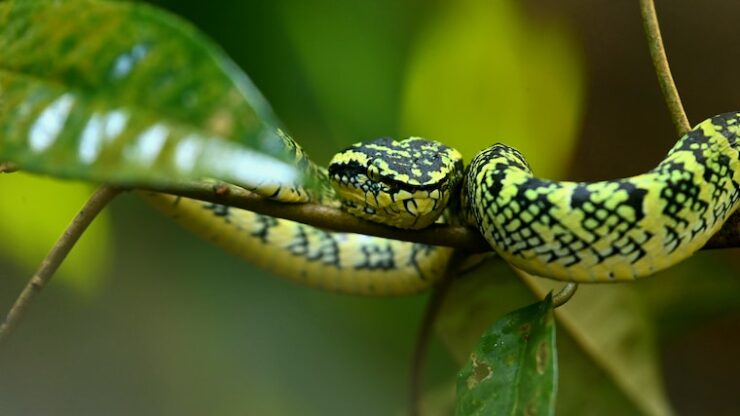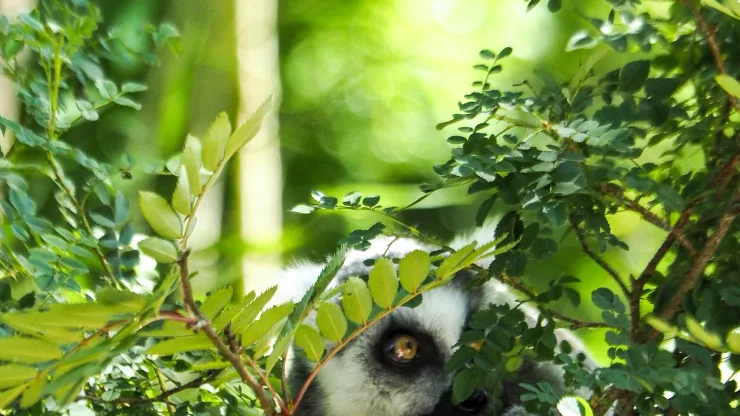Vipers are one of the most fascinating and dangerous snakes in the world. They belong to the Viperidae family, which includes more than 200 species distributed around the globe.
Here are some interesting facts about vipers:
- Vipers are venomous snakes that use their fangs to inject venom into their prey.
- They are found in a variety of habitats, including deserts, forests, and grasslands.
- Vipers have a triangular-shaped head that distinguishes them from other snakes.
- Their eyes have vertical pupils, which provide them with excellent vision.
- Vipers are ambush predators that wait for their prey to come close before striking.
- They are carnivorous and feed on a variety of prey, including rodents, lizards, and birds.
- Vipers have heat-sensitive pits on their heads that allow them to detect the body heat of their prey.
- The venom of vipers is highly toxic and can cause severe pain, swelling, and tissue damage.
- Some species of vipers, such as the Gaboon viper, have the longest fangs of any snake, which can reach up to two inches in length.
- Vipers are oviparous, which means they lay eggs.
- They are also viviparous, which means they give birth to live young.
- Vipers are known for their distinctive rattling sound, which they make by vibrating their tails.
- The Western diamondback rattlesnake is the largest species of viper in the world, with some individuals reaching over seven feet in length.
- Vipers have a lifespan of up to 25 years in captivity.
- Some species of vipers, such as the bushmaster, are capable of delivering multiple bites in a single attack.
- Vipers play an important role in their ecosystem by controlling the population of rodents and other small animals.
- The venom of some species of vipers, such as the Russell’s viper, can cause a coagulopathy, which is a disorder that affects blood clotting.
- Vipers are often featured in mythology and folklore, where they are portrayed as symbols of death and danger.
- Some species of vipers, such as the pit vipers, have a heat-sensing organ that allows them to detect prey in complete darkness.
- The venom of some species of vipers, such as the Mojave rattlesnake, contains a neurotoxin that can cause paralysis.
- Vipers can be found on every continent except for Antarctica.
- Some species of vipers, such as the horned viper, have horn-like protrusions above their eyes that give them a unique appearance.
FAQs
What should I do if I encounter a viper?
If you encounter a viper, it is important to stay calm and slowly back away.
Do not try to handle or approach the snake, as it can be dangerous.
Can vipers be kept as pets?
While some people may keep vipers as pets, it is not recommended, as they are venomous and can be dangerous.
How can I tell if a snake is a viper?
Vipers have a triangular-shaped head and vertical pupils. They also have heat-sensing pits on their heads.
Are vipers aggressive towards humans?
Vipers are not generally aggressive towards humans, but they will defend themselves if they feel threatened.
What should I do if I am bitten by a viper?
If you are bitten by a viper, it is important to seek medical attention immediately.
Do not attempt to suck out the venom or apply a tourniquet, as these methods can do more harm than good.
What is the most venomous viper?
The inland taipan, also known as the “fierce snake,” is considered to be the most venomous viper in the world.

I am a fun fact enthusiast and creator of Facts On Tap.
I love to share my knowledge and curiosity with readers and inspire them to learn something new every day.
When I’m not writing, I enjoy traveling, reading, and playing trivia games with my friends.



